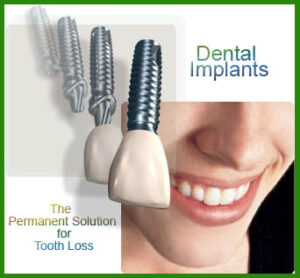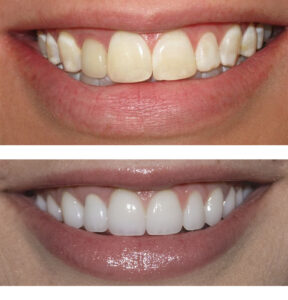Some of the solutions to your oral health needs available in our practice are listed belowThe treatments available to restore teeth and create healthy, attractive smiles are evolving at an enormous pace. We are committed to providing you with as many solutions to your dental needs within the practice as possible. We constantly update our knowledge by attending many post graduate skills enhancement and education courses. We can provide the most current methods and treatment developments in many disciplines of oral health.
Available TreatmentsChoose from the list of treatments below, Contact us if you have any questions or queries about our services and the cost of our treatments or view our price list Oral Examinations and Check-ups Dental examinations are very important to maintain overall health. Examinations are recommended every 6 months. Regular appointments can help in the early detection of tooth decay and prevention of gum disease. Under the Dental Benefit scheme, workers paying PRSI are entitled to one free Dental Examination per year - why not take advantage of this free benefit and let your taxes pay for you! Fillings Fillings are used to restore damaged, broken or decayed teeth. There are two types of filling materials used: amalgam fillings or tooth-coloured fillings. Amalgam fillings are made from a mixture of metals. These fillings are extremely durable and have a longer life span. Tooth-coloured fillings are made from a resin - these are a natural looking alternative. These fillings can be made virtually undetectable. Crowns A crown is a type of dental restoration which completely caps or encircles a tooth or dental implant. Crowns are often required when a large cavity threatens the ongoing health of a tooth. Crowns are natural looking, non-removable covers that fit over the tooth, and are permanently cemented into place. Crowns are used to improve the strength of appearance of teeth.
Bridge A bridge, is a dental restoration used to replace a missing tooth by joining permanently to adjacent teeth or dental implants. Bridges are used to span, or bridge a gap (missing teeth) between healthy teeth. Implant restorations A dental implant is an artificial tooth root used in dentistry to support restorations that resemble a tooth or group of teeth. They are integrated into a patient's jawbone fusing together with the bone over time to form a strong, long-lasting replacement tooth. An individual implant may be used to restore an area where a single tooth is missing, eliminating the need for dental bridges. Multiple dental implants may be used to restore an edentulous area or a series of missing teeth, eliminating the need for partials or dentures. Dental Veneers Veneers are a very thin outer shell of ceramic, or a poly-ceramic material placed on the tooth surface. They are custom-made and can camouflage broken or crooked teeth, fill gaps, straighten teeth and correct permanently stained teeth. Veneers are a conservative application of cosmetic dentistry where reducing or reshaping the natural tooth's structure is minimal. Veneers result in a very positive natural, bright smile. Tooth-whitening As a person ages the adult teeth often become darker due to changes in the mineral structure of the tooth, as the enamel becomes less porous. Root Canal Treatment Root Canal Therapy is a dental treatment involving the removal of a diseased or injured nerve from the tooth. Dentures Dentures are removable replacements for missing teeth typically made out of an acrylic resin. There are two main types of dentures, Complete Dentures and Partial Dentures. Dentures help strengthen muscles controlling your expressions that require the support of your teeth, solve problems of pronunciation caused by missing teeth and aid with chewing. Fissure sealants The top surfaces of your teeth - where the chewing takes place - aren't smooth and flat. They are cris-crossed with tiny hills and valleys - called pits and fissures. These are places where plaque can build up safe from your toothbrush and dental floss. Some of the pits and fissures are so narrow that even a single bristle from your toothbrush can't get deep enough to clean them out. One method of preventing cavities from developing in the pits and fissures is to seal them off with a special varnish called a pit and fissure sealant. If your dentist determines that you need a pit and fissure sealant to help protect your teeth from decay, some special steps are taken to prepare the teeth first Orthodontics Orthodontics is the branch of dentistry that corrects teeth and jaws that are positioned improperly. Crooked teeth and teeth that do not fit together correctly are harder to keep clean, are at risk of being lost early due to tooth decay and periodontal disease, and cause extra stress on the chewing muscles that can lead to headaches, TMJ syndrome and neck, shoulder and back pain. Teeth that are crooked or not in the right place can also detract from one's appearance. The benefits of orthodontic treatment include a healthier mouth, a more pleasing appearance, and teeth that are more likely to last a lifetime. Gum disease treatment Periodontal or gum disease is a pathological inflammatory condition of the gum and bone support (periodontal tissues) surrounding the teeth. Details of the cost of treatments can be viewed on our price list click here For more details contact us on 029-20785 or 087-9609458
|












